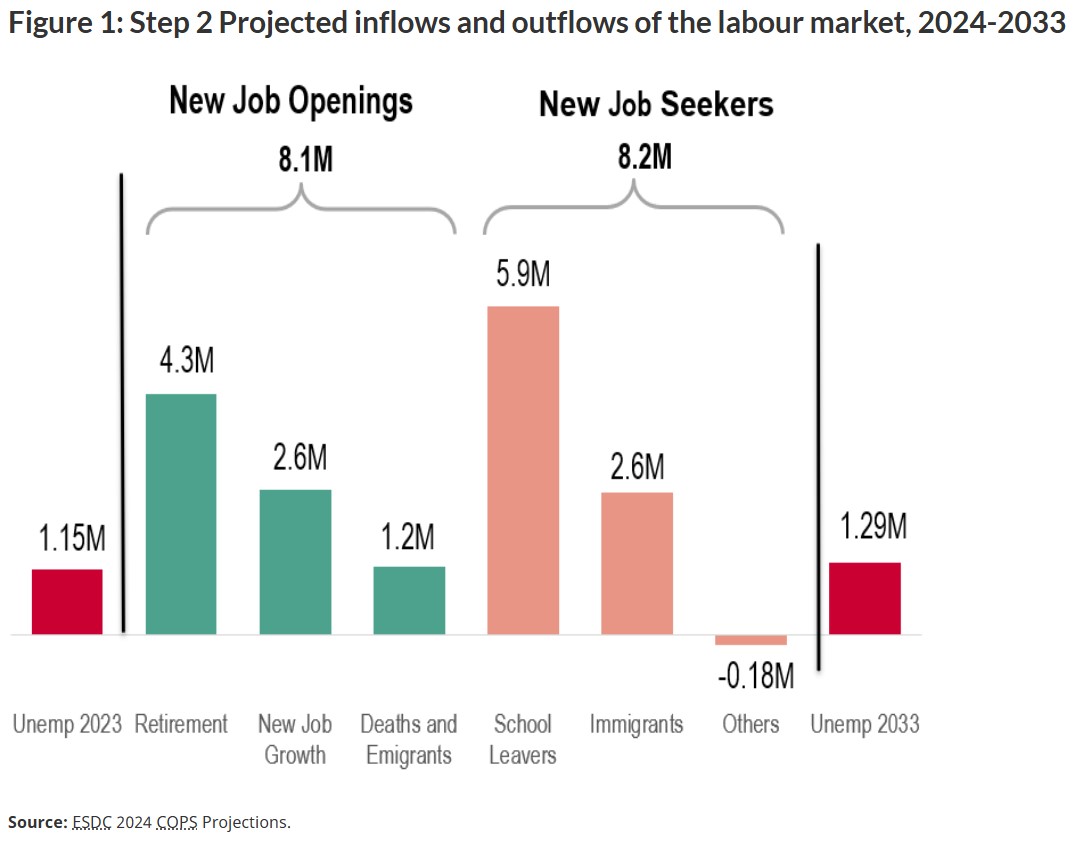
Three-quarters of projected job openings require post-secondary education or are management occupations

Canada is projected to see 8.1 million job openings between 2024 and 2033, with retirements accounting for nearly 70% of new vacancies, according to the latest projections from the federal government.
The Canadian Occupational Projection System (COPS), developed by Employment and Social Development Canada (ESDC), estimates that 5.5 million job openings will result from workforce replacements, while 2.6 million positions will emerge due to economic growth.
The report highlights that “three-quarters of all projected job openings are in occupations that usually require post-secondary education or in management occupations.”

At the same time, Canada’s workforce is expected to grow by 8.2 million new job seekers, primarily driven by school graduates (5.9 million) and immigrants (2.6 million). However, even with increased immigration, retirements will continue to drive workforce shortages in several key industries.
The federal government also pinpoints different trends among different industries:
Ontario is expected to need 20,700 additional nurses by 2027, and 33,200 by 2032, according to a report from The Canadian Press (CP). Meanwhile, B.C.’s construction industry needs to recruit 52,600 additional workers between 2022 and 2032 to keep pace with labour demands and avoid a deficit of 18,700 construction workers.
Also, the Canadian Construction Association reports that while census data indicates a 9.2% increase in construction workers from 2016 to 2021, bringing the total to 1.3 million, the industry is still dealing with over 93,000 unfilled job openings across the country.
One way that employers are filling job openings is by tapping the services of immigrant workers. Canadian employers’ reliance on temporary foreign workers was on full display last year, when the number of employers allowed to hire workers through the Temporary Foreign Worker (TFW) Program more than doubled from 2018 to 2023, according to a recent CBC report citing data from Employment and Social Development Canada (ESDC).
However, the federal government had said that it is lowering its immigration targets from 2025 to 2027. Ottawa has also tightened the rules around employers’ use of the Temporary Foreign Worker (TFW) Program.
"The government will have to make sure that there's still robust pathways, particularly in the healthcare sector, because we could see shortages there otherwise," Mike Moffat, senior director of the Smart Prosperity Institute, a research network based at the University of Ottawa, said in a previous Reuters report.
Previously, experts from strategic management consulting firm Boston Consulting Group said that industrial employers can fill job openings by making work attainable, sustainable and rewarding for more people. They can do that by doing the following, they said: